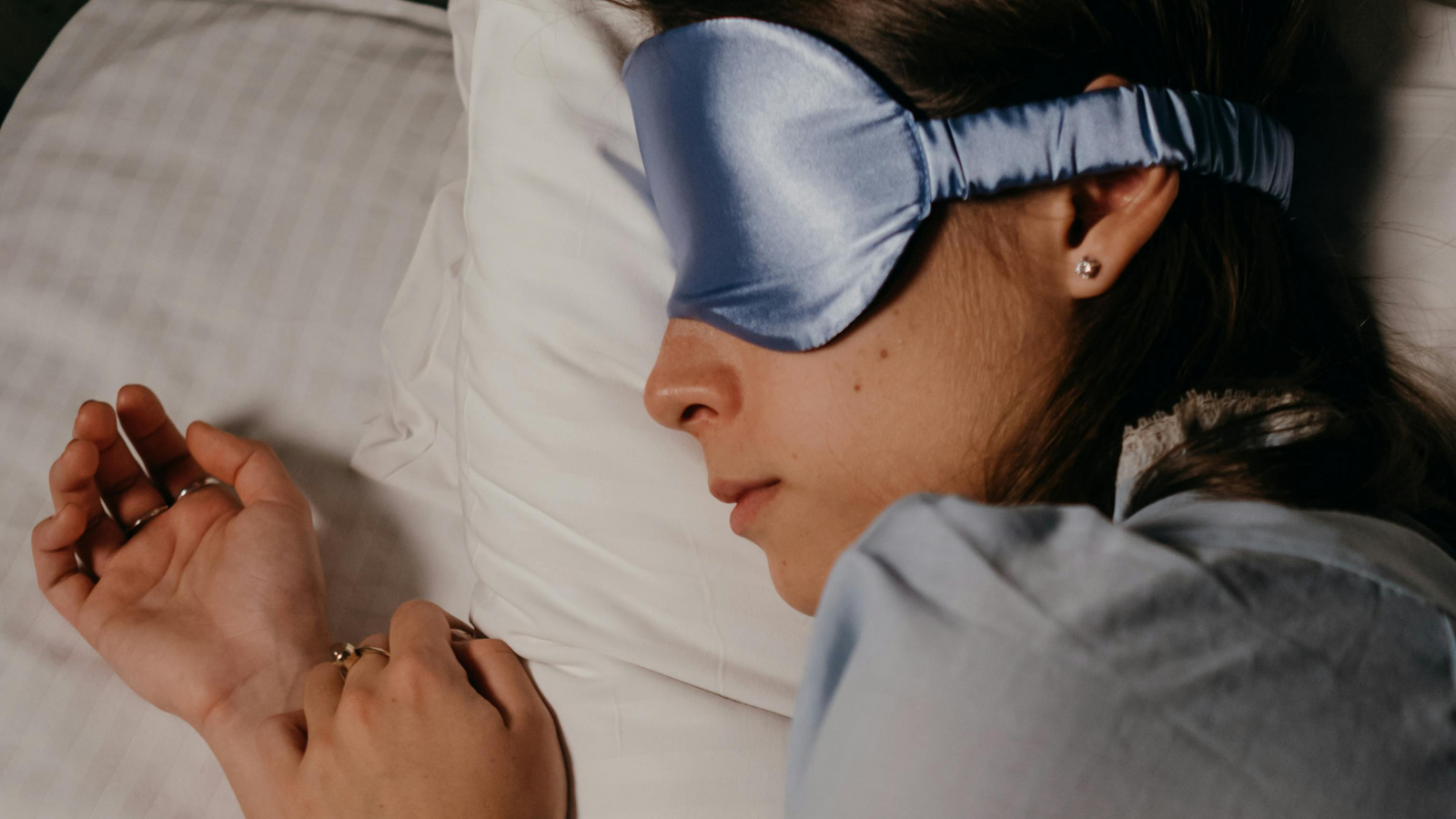Your Cart is Empty
Buy now, pay later or in 3 with Klarna
Get free shipping by subscribing to newsletter!
Fast shipping from our warehouse in the UK!
Buy now, pay later or in 3 with Klarna
Get free shipping by subscribing to newsletter!
Fast shipping from our warehouse in the UK!

Weird Sleep Positions
There are two types of sleepers in this world: those who subscribe to the traditional resting postures — side, stomach, and back sleepers — and those that opt for a more unique sleeping situation. From mummy poses to starfish and sleepers who sit up, there are many “weird sleeping positions” to rest in.
In this post, we’ll discuss these weird sleep positions, what they say about you, and explore some different sleeping positions you may find just as comfortable. Read on for a comprehensive look at sleeping in weird positions, or use the links below to skip to the section you’re most interested in.
Sleep Positions and What Yours Says About You
Did you know your sleeping position could reveal much more about you than how well-rested you are? According to Professor Chris Idzikowski, Director of the Sleep Assessment and Advisory Service, different sleeping positions may offer up some clues into an individual’s personality.
Idzikowski analyzed six unique sleeping postures and found that each could be linked to certain personality types. The positions Idzikowski studied include:
- Fetal position/side-sleeping:Side-sleeping with the knees held close to the chest.
- Log:When a sleeper lies on their side with both arms down at their sides.
- The yearner:People who sleep on their side with arms stretched in front of them.
- Soldier:Lying on your back with both arms locked at your sides.
- Freefall:When you lie on your stomach with your head turned to one side and arms hugging the pillow.
- Starfish:Back-sleeping with both arms and legs stretched out.
Now that you’re familiar with these sleep postures, let’s take a look at some of the findings Idzikowski and other sleep researchers have discovered about sleeping positions and personality.

Side-sleepers/fetal position sleepers
Although most individuals change up their position while they sleep, side-sleeping makes up for nearly 55% of the time in bed, making it the most common option. But, what does one of the most comfortable sleeping positions say about its sleepers?
According to the Idzikowski analysis, side-sleepers have a tough exterior but are actually quite sensitive on the inside. Additionally, side-sleepers are likely to appear shy and reserved when they meet someone new but tend to relax and become more open with time.

Log-sleepers
If you choose to sleep on your side with both arms down at your hips, like a log, you are not only a rarity but may have some distinct character traits. In his research, Idzikowski found that those who sleep in the log-style are well-liked, laid-back, and sociable. However, because log-sleepers are so trusting of others, they may be considered gullible.

The yearner
While it may seem like a weird sleeping position — side-sleeping with arms outstretched — “the yearner” made up 13% of Idzikowski’s study sample. In his research, he found that those who sleep in this position tend to be innately open, but may also be suspicious and cynical. Although they may be slow to make a decision, yearners typically stick with their decisions confidently.

Free-falling stomach-sleepers
Those that lie on their stomach with their head to one side and hands around the pillow, made up 7% of the study’s population. These stomach-sleepers were found to appear sociable and confident on the outside, but are secretly anxious and sensitive.

Starfish-sleepers
Starfish-sleepers sleep in the shape of a starfish, on their back with their limbs, stretched out. Individuals who adopt this weird sleep position are believed to be helpful, loyal friends with great listening skills. Although sociable, starfish-sleepers don’t like to be the center of attention.
Spooning-sleepers
While Idzikowski did not study couples’ sleeping poses in his research, there is lots of information circulating about couples that spoon. For the uninitiated, spooning is when two or more persons snuggle together facing the same direction. The rear of one person is forced against the front of the other. Arm and leg positions can vary — some people encircle their lover with their arms, while legs are interlaced or stacked.
Beyond comfort, spooning can have a positive impact on both party’s health and the relationship as a whole. How? Science suggests that hugging, which can take the form of spooning, releases the feel-good chemical, oxytocin. Oxytocin has been said to lower blood pressure, strengthen the immune system, ease pain, and more.
What’s more, some suggest that couples that spoon in bed have a more open, intimate relationship than those that prefer more distance when they sleep. Of course, this sentiment varies for all couples.

Weird Sleep Positions: FAQs
Now that you’re familiar with what your sleeping position says about you, or perhaps have answered “why do I sleep in weird positions?”, let’s take a look at some frequently asked questions.
Does the position you sleep in really have anything to do with your personality?
It may! Idzikowski’s study represents a subset of the population’s sleepers, so while it may provide some informative and credible data, it probably doesn’t accurately reflect allsleepers. To find out what the way you sleep says about you, take note of your own dominant personality traits and your preferred sleeping postures in a sleep journal.
What is the least popular sleeping position in the world?
According to the Alaska Sleep Clinic, the starfish position is the least common sleeping posture, making up for approximately 5% of the population.
Which weird sleeping positions are best for your health?
In addition to studying the link between personality and sleep posture, Idzikowski also examined how different sleeping positions affected health. His findings include:
- The freefall position positively impacts digestion
- The starfish and soldier positions tend to contribute to snoring and a poor sleep
The National Sleep Foundation offers some additional insight into healthy sleeping positions:
- For back or shoulder pain, try sleeping on your back to take pressure off of your shoulder and distribute weight evenly across your spine. Additionally, a specialized pillow like our Shoulder Relief System can help.
- If you snore or have sleep apnea, sleep on your side to minimize your symptoms.
- If you are pregnant, it is recommended that you sleep on your side to promote sufficient blood flow to the fetus.
How do you change a weird sleeping position?
Whether you sleep in a weird or conventional sleeping position, you may be interested in adjusting the way that you sleep. A new resting posture may improve the quality of your sleep, minimize discomfort, or positively impact your overall health. However, changing your sleeping posture is often easier said than done.
To start, experts suggest maximizing your sleep environment by investing in a good-quality mattress and pillows. If you intend to sleep on your side, for example, consider purchasing a pillow that’s designed for side-sleeping, like our therapeutic body pillow. Then, simply start your night in that position, pushing past the initial discomfort.

Wrapping Up
Different sleeping positions offer their own unique benefits and drawbacks to each sleeper. Whether you sleep like a starfish, log, or somewhere in between, thinking about what your sleeping position says about you can be an interesting and informative exercise. Did your preferred sleeping posture and personality align? Let us know in the comment section below.
To learn more about MedCline solutions, head over to our proven results page for clinical trial findings, data, and more.



